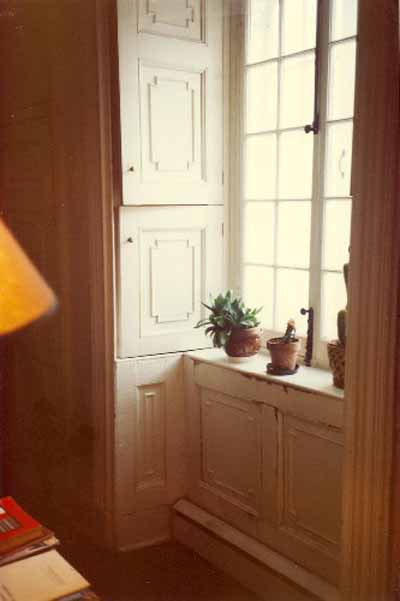Louis-Joseph Papineau National Historic Site of Canada
Montréal, Quebec

Interior view
© Agence Parcs Canada / Parks Canada Agency, 1990.
Address :
440 Bonsecours Street, Montréal, Quebec
Recognition Statute:
Historic Sites and Monuments Act (R.S.C., 1985, c. H-4)
Designation Date:
1968-11-28
Dates:
-
1748 to 1748
(Construction)
-
1814 to 1871
(Significant)
Event, Person, Organization:
-
Louis-Joseph Papineau
(Person)
Other Name(s):
-
Louis-Joseph Papineau
(Designation Name)
Research Report Number:
1968-064, 1974-F, 1986-027, 2002-SDC/CDE-029, 2011-SDC-CED-030
DFRP Number:
56459 00
Plaque(s)
Existing plaque: 440 Bonsecours Street, Montréal, Quebec
This stone residence, which dates to 1785, was home to politician Louis-Joseph Papineau (1786–1871), leader of the Parti canadien (later, Parti patriote) and champion of republicanism in Lower Canada. He acquired the house in 1814, later expanded it, and added a neoclassical façade of wood cladding, fashioned to simulate cut stone. As tensions mounted in the years leading to the 1837 uprising, it was the scene of numerous political demonstrations. After he returned from exile in the United States and France, Papineau lived here until the completion of his seigneurial manor, “Monte-Bello,” in 1850.
Description of Historic Place
Louis-Joseph Papineau National Historic Site of Canada was the Papineau family home in Montreal. Located on rue Bonsecours, the two-and-a-half storey stone house with its steeply pitched roof sits flush to the street. An arched passageway allows for vehicular access to the rear courtyard. The designation refers to the limits of the property at the time the house was designated in 1968, and they extend from the house at the street line to include an interior rear courtyard.
Heritage Value
Louis-Joseph Papineau National Historic Site of Canada was designated in 1968. It is designated because: this place is importantly associated with the most active and important period in Papineau’s life when he was the leader of the Parti canadien and one of the leading figures in the political unrest which led to the Rebellion of 1837; and, it represents a successful amalgamation of various stylistic approaches including a French Regime building tradition overlaid with a Neo-Classical and Palladian architectural vocabulary.
Louis-Joseph Papineau National Historic Site of Canada is valued for its connection to Papineau during the years he was most active politically. His family’s long period of previous ownership make the underlying French Regime architecture of this house a reflection of Papineau’s roots. The changes he introduced in 1831-32 provide an indication of his tastes as well as the new ideas he implemented to suit his contemporary world.
This house was owned by the Papineau family from 1748 to 1779, and again from 1809 to 1920 and was substantially renovated by Louis-Joseph Papineau in 1831-1832. The changes he made included construction of covered brick passage providing entrance to the rear courtyard, moving the main door from a central location on the façade to one end and creating a new interior vestibule and main staircase. This house was sold to the Government of Canada in 1982. Under Parks Canada administration, its roof and façade have been substantially rebuilt.
Sources: Historic Sites and Monuments Board of Canada, Minutes, 1981, 2002.
Character-Defining Elements
Key elements contributing to the heritage value of this site include: the setting of the house in Old Montreal; its alignment at the street line with other buildings on rue Bonsecours; its L-shaped footprint and two-and-a-half storey massing; the steeply pitched roof of the main portion of the house, with inset double row of dormers and the dormered shed roof over the rear addition; the symmetrically organized main façade with neoclassical inspired decorative elements including prominent corner quoins, ornate wood trim lining the arched main entrance, the arched passageway, narrow eaves, highly finished masonry facing on ground floor; the wide eaves and rubblestone walls of the kitchen wing which continues to reflect the architectural values of the house during the French Regime; the integrity and craftsmanship of all materials including differing cuts and finishes of stonework, brick, metal and wood, and construction technologies including the use of wood imitating stone; the surviving materials dating before 1832 on the interior of the building, their substance, finishes, and craftsmanship; surviving evidence of the interior layout of the Louis-Joseph Papineau era.